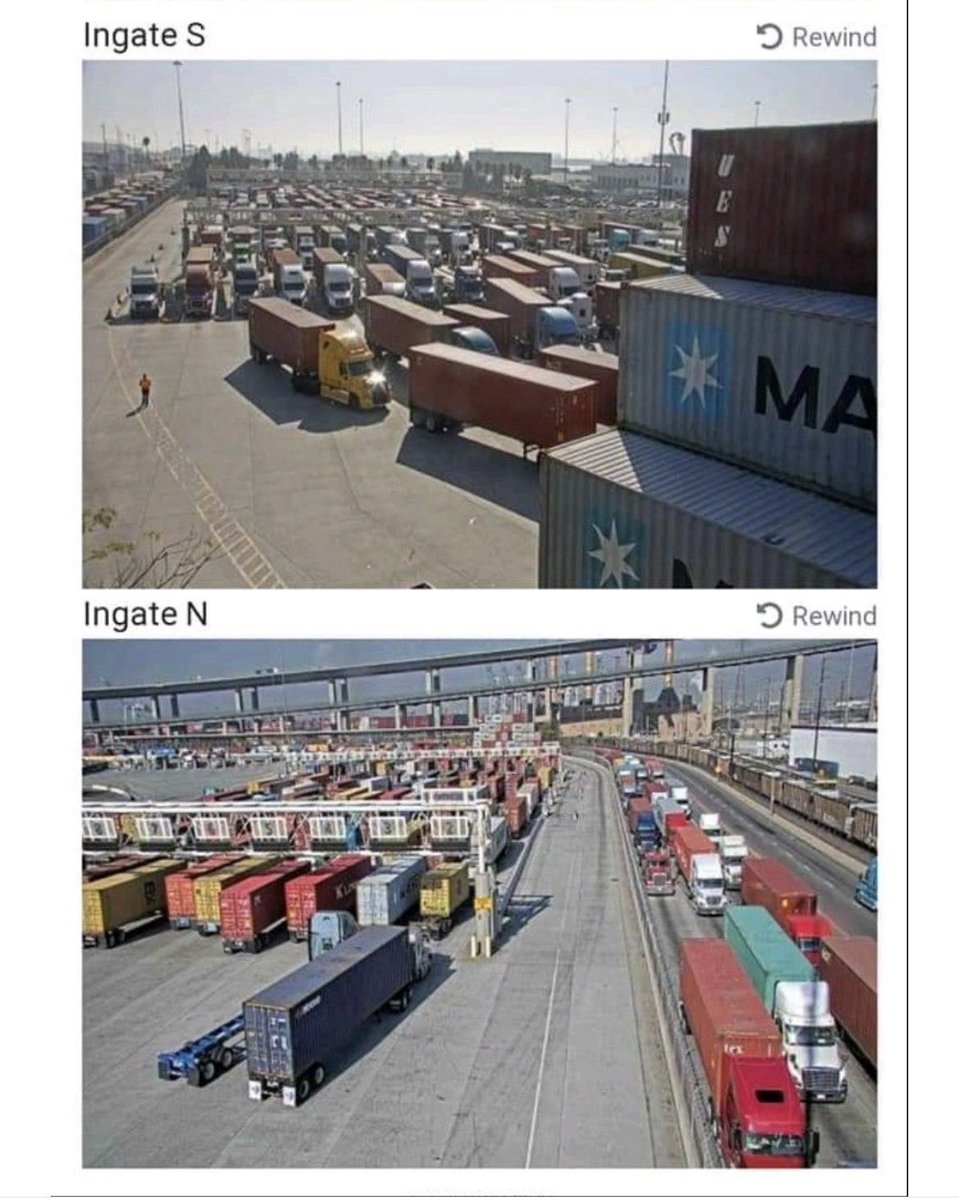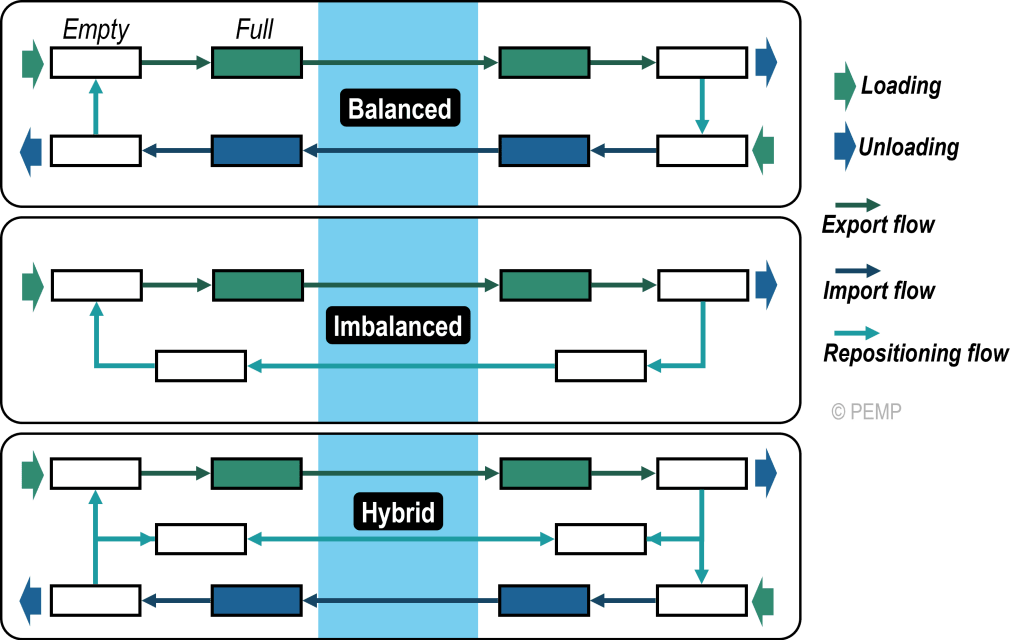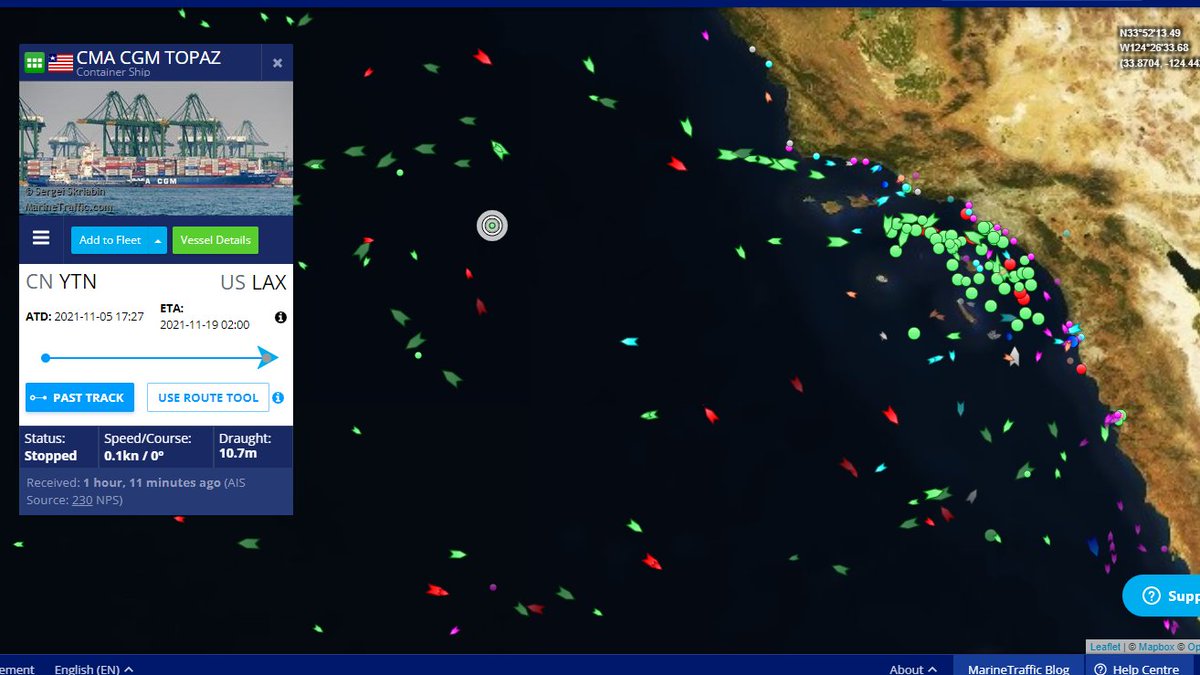
1/Why are @PortofLA & @portoflongbeach slowing down in Oct & Nov?
@mattschrap of @harbortruckers
hits it on the head with his assessment of the primary impediment at the 15:00 mark.
100,000+ EMPTY CONTAINERS IN THE PORTS.
bloomberg.com/news/videos/20…
@mattschrap of @harbortruckers
hits it on the head with his assessment of the primary impediment at the 15:00 mark.
100,000+ EMPTY CONTAINERS IN THE PORTS.
bloomberg.com/news/videos/20…
2/Ocean shipping containers do not typically venture far from the harbors. What most people see on the roads and highways are not intermodal containers, but 40 or 53ft trailers. The material from overseas is offloaded at sites close to the port and repacked for delivery. 

3/When you hear about a truck shortage, it is not one of trucks & drivers. For a truck to load, it has to bring a chassis to load a container on. Usually, it has an empty to return. As the terminals are full, there is little room to store them, making moving boxes slow. 

4/This delay in offloading the empty & loading a full one means that drayage drivers who normally make 2-3 trips a day, are only making 1. Adding more trucks & drivers does nothing to alleviate this, but only adds to the congestion & pushes drivers away due to less pay. 

5/So, what is the solution?
The answer is simple, but requires coordination.
1️⃣ Identify a large area near the ports that can be used as a temporary empty storage yard.
2️⃣ Route drivers to facility to offload, check-in w/boxes (waive detention fees) & clear their chassis.
The answer is simple, but requires coordination.
1️⃣ Identify a large area near the ports that can be used as a temporary empty storage yard.
2️⃣ Route drivers to facility to offload, check-in w/boxes (waive detention fees) & clear their chassis.

6/ Continued
3️⃣Activate National Guard or Reserve unit to initially staff & equipment facility to offload and track empties. This can be phased over to contract operation concurrently.
4️⃣Less boxes in terminals & no need to offload chassis, the turnaround in ports will improve.
3️⃣Activate National Guard or Reserve unit to initially staff & equipment facility to offload and track empties. This can be phased over to contract operation concurrently.
4️⃣Less boxes in terminals & no need to offload chassis, the turnaround in ports will improve.

7/This will improve the throughput in the ports, but it will not help with the situation in the warehouses and distribution centers where the containers are going from the ports. They are at capacity, and working limited hours.
Action has to take place, simultaneously.
Action has to take place, simultaneously.
8/This is not new, as myself, @man_integrated and @typesfast have all advocated for actions similar to this.
We just need @POTUS @FMC_gov
@DOTMARAD @SecretaryPete @PortofLA @portoflongbeach to take notice and coodinate action.
We just need @POTUS @FMC_gov
@DOTMARAD @SecretaryPete @PortofLA @portoflongbeach to take notice and coodinate action.
11/We Are Drowning in Empty Containers - @PortofLA & @portoflongbeach and How #Lego Has The Answer
@mattschrap @harbortruckers identified empty containers as the issue. We breakdown the discharge of ships, why empties are an issue & a proposed solution.
@mattschrap @harbortruckers identified empty containers as the issue. We breakdown the discharge of ships, why empties are an issue & a proposed solution.
• • •
Missing some Tweet in this thread? You can try to
force a refresh













